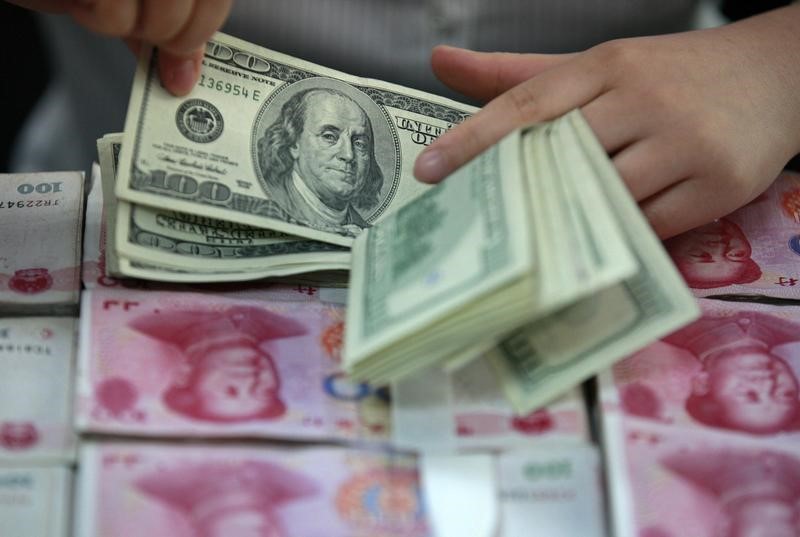Investing.com - The Chinese yuan tumbled more than 1% on Monday, falling below 7 per U.S. dollar for the first time since the 2008 financial crisis, as fears over a sudden escalation in the U.S.-China trade war sparked a selloff in Asian currency markets.
The yuan dropped below the 7 per dollar level, regarded as a major support level, falling to as low as 7.1097 per dollar in offshore trade and 7.0424 to the dollar onshore.
"This could well be the biggest moment for the yuan this year. The impact of U.S.-China trade is turning out to be very big," said Masashi Hashimoto, senior currency analyst at MUFG Bank.
“Looking at the mid-point, the People's Bank of China is trying to stem the yuan's fall," he said. "The PBOC doesn't look like it is trying to use a weaker yuan to counter U.S. trade pressure. The yuan's fall seems to be stemming from panicky selling."
The steep selloff came after Beijing vowed on Friday to fight back against U.S. President Donald Trump's abrupt decision to slap 10% tariffs on the remaining $300 billion in Chinese imports, a move that ended a month-long trade truce.
The weaker yuan weighed on Asian currency markets, sending the Korean won 1% lower to hit a three-year low of 1,218.3, while the new Taiwan dollar fell more than 0.5% to a two-month low of 31.61.
The flight to safety lifted the yen, which often gains in times of market stress thanks to Japan's position as the world's largest creditor. The dollar slipped to a seven-month trough of 105.78 yen, while the euro sank to its lowest since April 2017 at 117.64 yen.
Weakness against the yen saw the U.S. dollar index dip 0.11% to 97.74 by 02:45 AM ET (06:45 GMT) though the greenback was up against currencies exposed to China or commodities, including the Australian dollar.
The Aussie , a liquid proxy for emerging market and China risk, slipped to a fresh seven-month trough of 0.6748 after losing 1.6% last week.
The Swiss franc was boosted by safe-haven demand from the escalating trade tensions. Trump is also eyeing tariffs on the European Union, but is yet to make any formal announcements.
The euro was a touch higher against the dollar at 1.1119, extending its recovery from a two-year low of 1.1027 touched on Thursday.
On Friday, the closely-watched U.S. employment data showed non-farm payrolls increased by 164,000 jobs in July, fewer than the prior month, and wages increased modestly.
The data cemented expectations that the Federal Reserve will cut interest rates again in September after it delivered its first rate reduction in more than a decade last month.
The British pound hovered near 2017 lows at 1.2106, pressured by concerns about Britain exiting the European Union without a deal in place.
--Reuters contributed to this report
